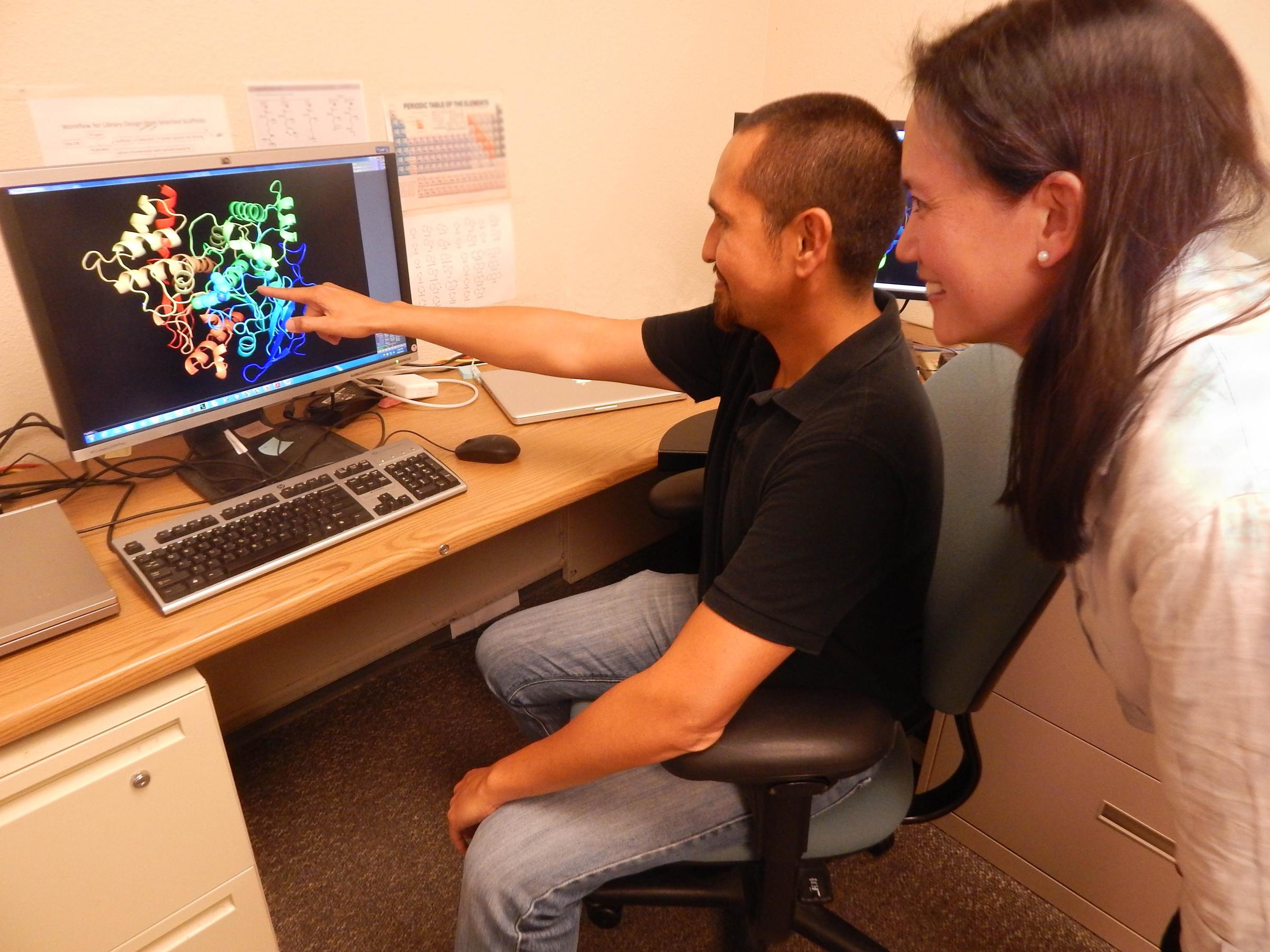The ability to attach proteins to a solid support (such as protein chips, biosensors, etc.) play a critical role in biology and biophysics. For example, the creation of functional protein microarrays is critical for the progress in proteomics research. The creation of protein chips will allow the analysis and screening of thousands of proteins simultaneously, which will promote the discovery of new drug targets and it can also be used as a diagnostic tool. Various methods are available for attaching proteins to solid surfaces. Most of them rely on either non-specific adsorption or the reaction between complementary reactive groups on the surfaces of proteins (e.g., amino and carboxylic acid groups). In both cases, the protein is attached to the protein’s surface in random orientations and is often irreversible. Although recombinant affinity tags can be used to address the orientation issue, they require large mediator proteins that must be separated after the subsequent assay is completed. In the following technology, a new generic method for the attachment of proteins to any solid support with control over the orientation of the attachment is described.
Researchers at LLNL have developed a new method to utilize highly selective molecular recognition events to attach proteins to any solid support through the C-terminus. The approach is based on the use of protein trans-splicing, which is a naturally occurring process similar to protein splicing with the difference that the intein (e.g., DnaE intein from Synechocystis sp. PCC6803) self-processing domain is split into two fragments (N-intein and C-intein). These two intein fragments are inactive individually, however, under appropriate conditions they can bind to each other with high specificity to form a functional protein-splicing domain. In the method described here, the C-intein fragment is covalently immobilized onto a glass surface through a PEGylated-peptide linker, whereas the N-intein fragment is fused to the C-terminus of the protein that is intended to be attached to surface (see figure). When both intein fragments interact, they form an active intein domain, which ligates the protein of interest to the surface. At the same time, the split intein is spliced out into solution.
Immobilizing the proteins using protein trans-splicing is highly specific and efficient (yields range from 85% to almost quantitative). It allows the use of protein mixtures and eliminates the need for the purification and/or reconcentration of the proteins before the immobilization step. All these features allow this methodology to be easily interfaced with cell-free protein expression systems with rapid access to the high-throughput production of protein chips and other types of biosensors.
- Control over the orientation of the protein attached
- High specificity and efficiency of protein attachment
- Eliminates the need for protein purification before immobilization
- Protein-Chip Fabrication
- Drug discovery
- Biomedical field
- Chemistry, biology, material science fields
- Protein crystallization and structural studies
LLNL has obtained a patent (US Patent 7,972,827) covering this technology (LLNL Internal Case # IL-11807)


